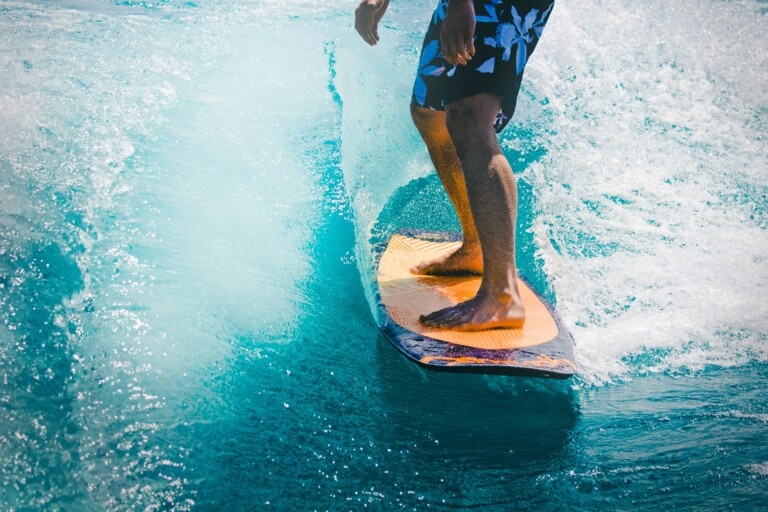Stand up paddle boarding is a fast-growing sport in the nation, and it is easy to see why. Stand up paddle boards are fun, provide an excellent workout, and anyone can learn how to do it because it’s so easy. Selecting your first paddle board can be a daunting task. Here are five tips to help you get started. Understand the different types of stand up paddle boards (sups). Knowing the differences between the types can help you pick which one is best for you. Categories include: all around, inflatable, fishing, yoga, touring, surf, and race sups. The four most common types are all around, surf, touring, and race sups.
- All around sups are the perfect choice for beginners or casual paddle boarders. They are versatile, work in all conditions, and are the most common shape. They are even dog-friendly!
- Surf sups are the go-to choice for intermediate and advanced paddlers. They are easy to fall off of due to their increased maneuverability. These sups are very similar to surfboards, but they are larger and of course, have a paddle.
- Touring sups are designed for longer distances, making them the excellent choice for people who want to get involved with more serious workouts or who want to spend long days on the water. While these are wide enough for beginners to feel comfortable, they’re primarily aimed at long journeys.
- Race sups are longer and wider than traditional boards, as they are designed for speed and maximum efficiency. These boards can be challenging to use for beginners but are excellent for elite athletes.
- Fishing sups are unlike the rest of the boards previously mentioned — they sit higher out of the water and are an excellent investment for people who do not want a boat. They are often equipped with extra mounts so you can install your fishing equipment. These boards would not be suitable for a workout like the other boards.
- Yoga sups are constructed with the maximum amount of stability in mind. They are great for any fitness related activity and are difficult to fall off of due to their wide decks. Yoga sups can be used by any paddle boarder.
Know what size board you need. Board size varies by individual —weight, height, and level of experience all play a part in determining which board will work best for you. Think about boards regarding volume. Volume equals stability on the water; the more experience you have and the more fit you are, the less volume you need. Conversely, if you are looking for a relaxing experience, you will want more volume than if you were looking to surf. You can always downsize later, as larger volume boards are great for resale and to get family and friends involved in paddleboarding with you.
Decide whether you want an epoxy board or an inflatable one. Each board type has their ups and downs. Depending on how you will use the board depends on which one you want. For example, while epoxy boards surpass inflatables in performance, most beginners will do better on an inflatable board because it works well in all conditions. Inflatable boards are also easier to transport, as epoxy boards require either a truck or a car/SUV with luggage racks. In the same vein, inflatable boards fold up easily and require less storage space.
Decide on storage before purchasing your board. Regardless of what kind of board you purchase, you will want to keep it indoors, away from the elements when it is not in use. Because the standard SUP is approximately 9 feet long, a lot of people opt for an inflatable board that can be rolled into a space that would fit a sleeping bag. Both epoxy and inflatable boards should be kept out of direct sunlight, as it degrades the board. Alternatively, use it so much that you don’t need to store it!
Figure out what value metrics mean the most to you before purchasing. Companies are experts at marketing, which can cause you to spend more than your budget or entice you into getting a board that is not quite right for you. The top the things to look for are price, customer service ratings, and any guarantees/warranties offered. It’s important to do a lot of research and compare companies.
Once you have done your research, do not be afraid to pick the board that appeals to you most and book your first SUP lessons.











